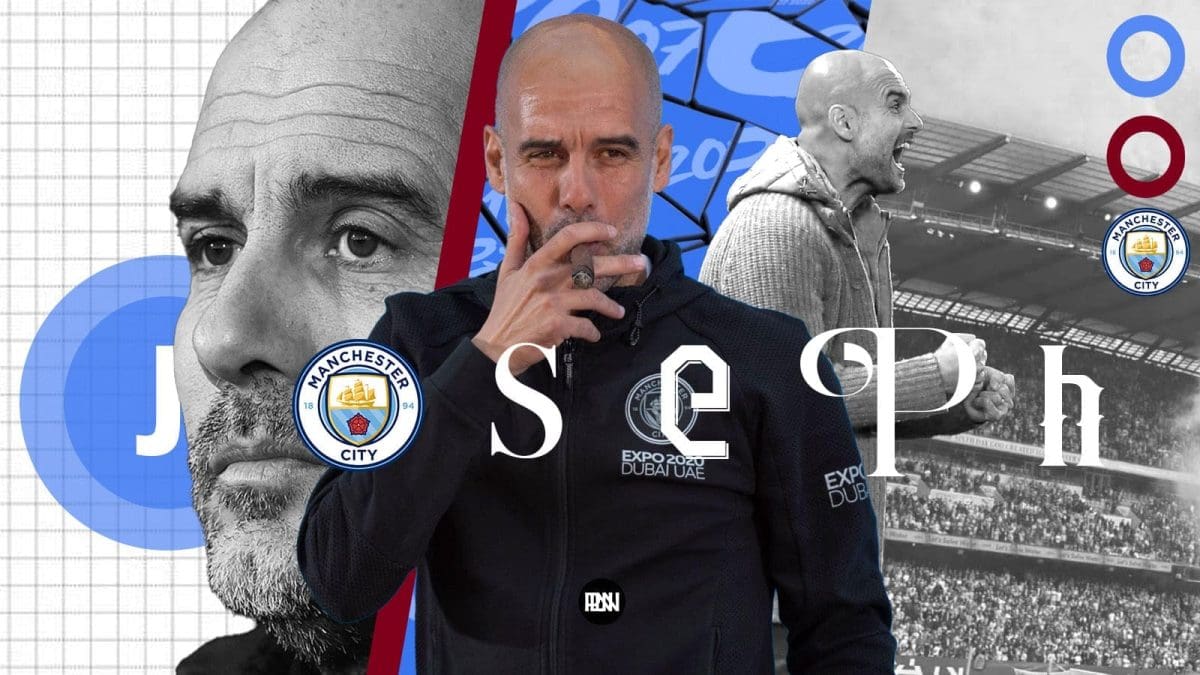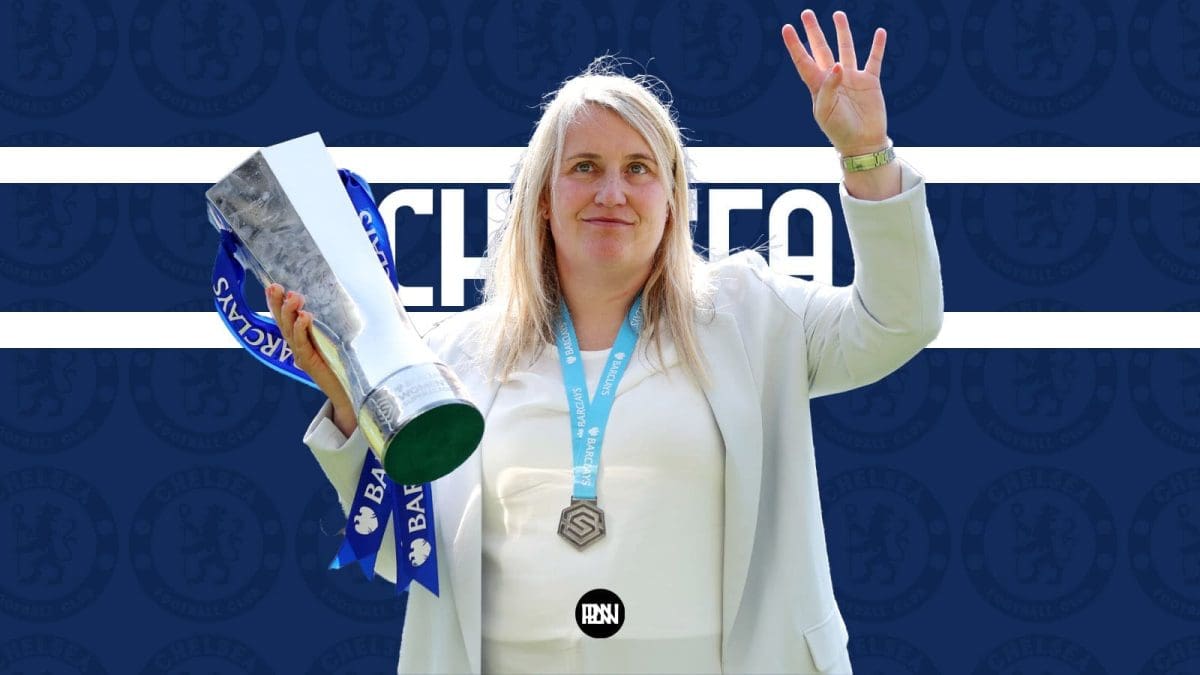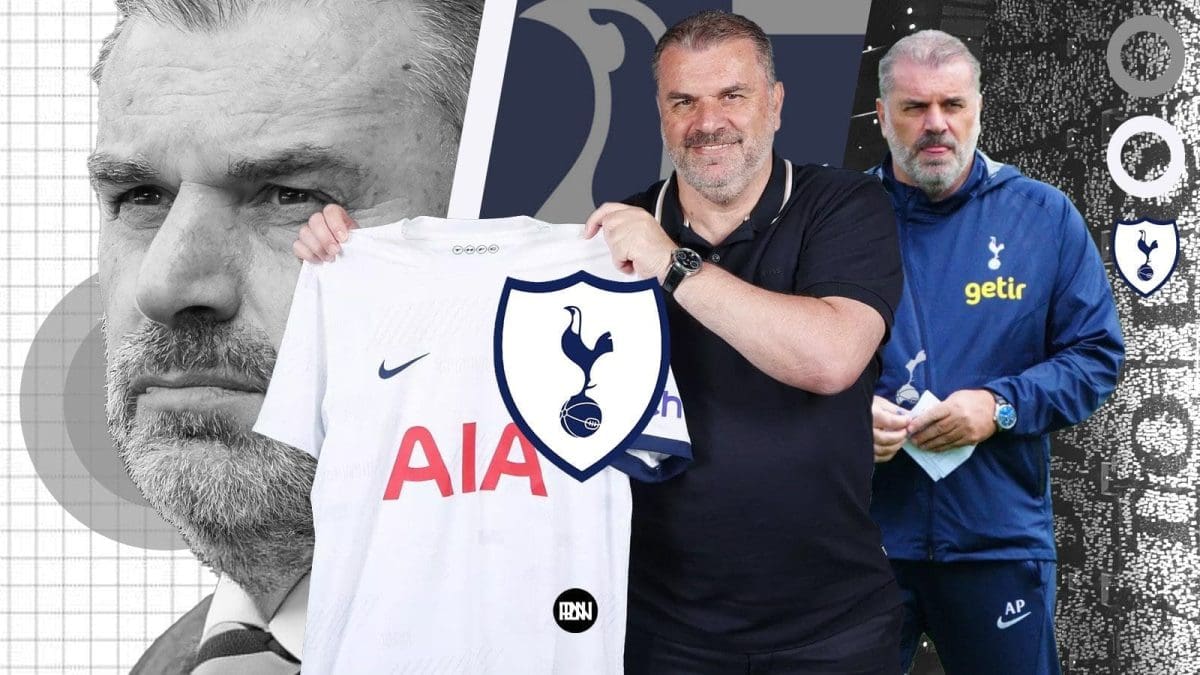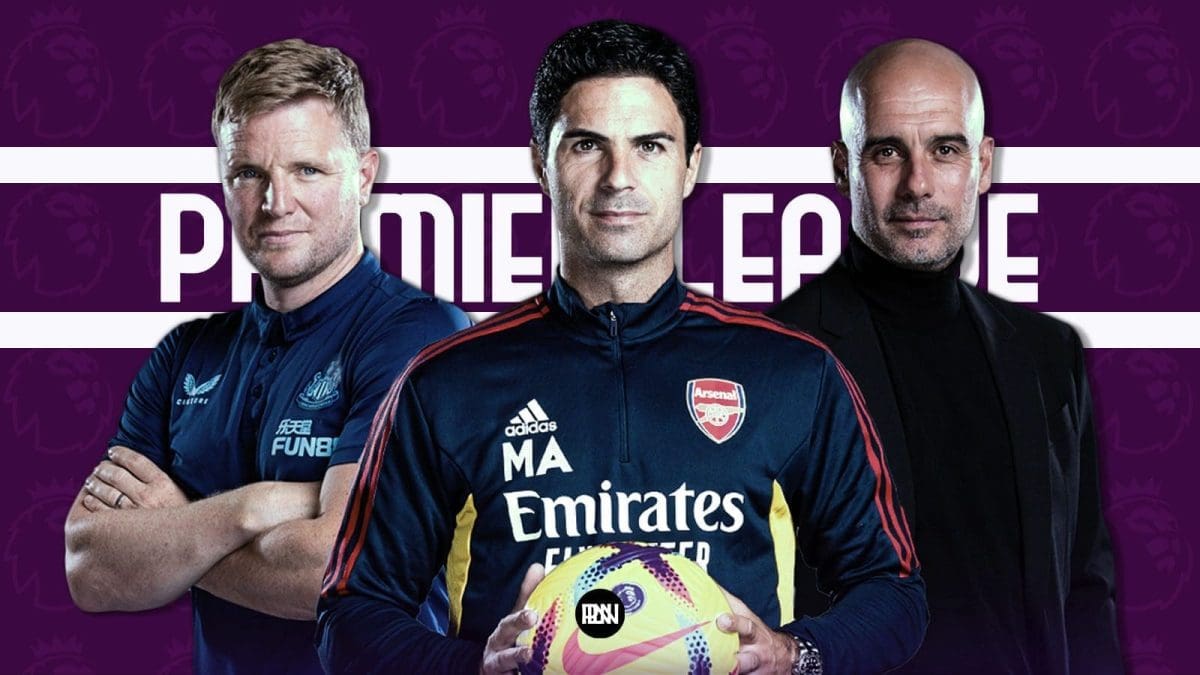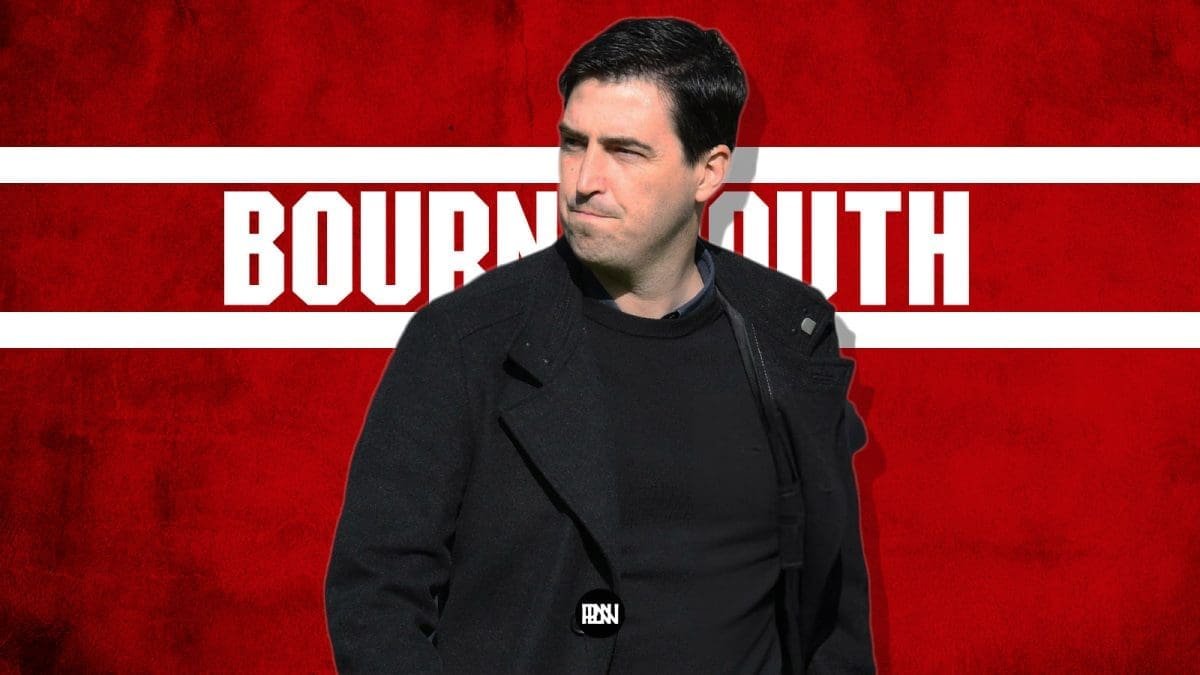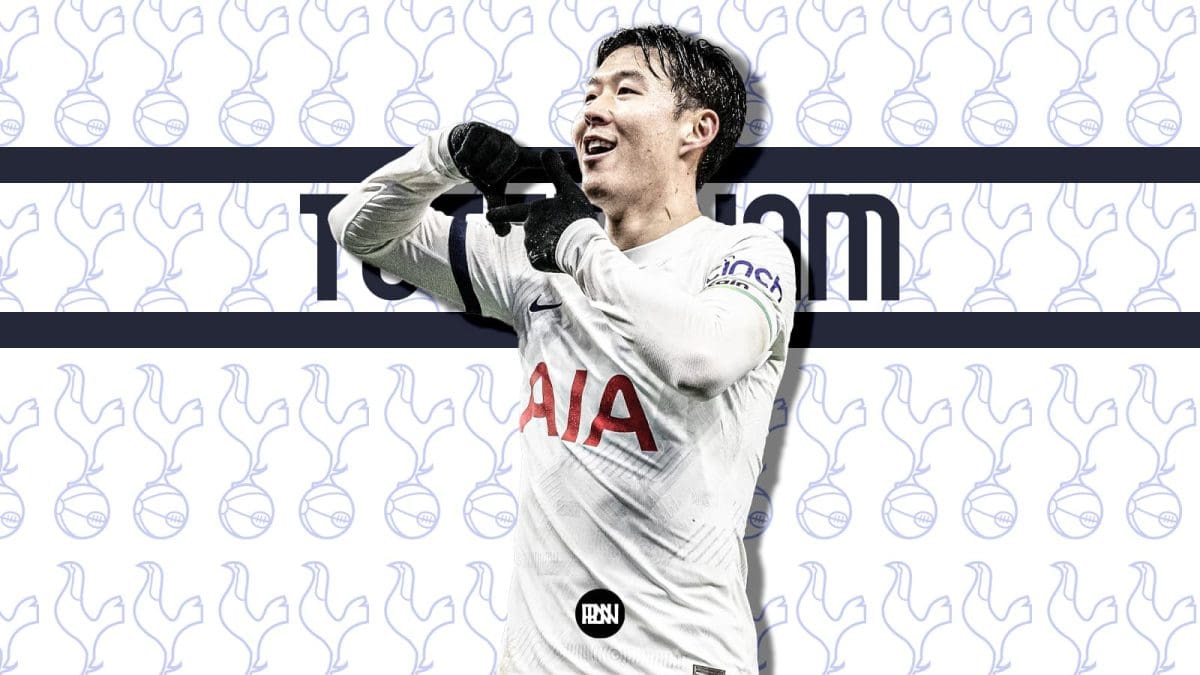When Pep Guardiola took over as the manager of Manchester City in 2016, it was clear that the club had secured the services of one of the most sought-after managers in the world. With his innovative approach to tactics and a strong emphasis on attacking football, Guardiola quickly transformed Manchester City into a dominant force in English football. Under his guidance, the team achieved unprecedented success, winning multiple Premier League titles, FA Cups, and League Cups.
In the 2022/23 season, Guardiola led Manchester City to an historic treble, which included winning the Champions League, Premier League, and the FA Cup. This article explores the tactical modifications made by Guardiola, the impact of new signing Erling Haaland, and the key elements behind Manchester City’s incredible success.
The Evolution of Guardiola’s Tactics
Guardiola is known for his ability to adapt his team’s tactics based on the strengths of his players and the challenges posed by opponents. Throughout his time at Manchester City, Guardiola has consistently emphasized a possession-based playing style. His teams prioritize short passing from the goalkeeper, creating numerical overloads in the first line of build-up, and utilizing a double pivot in midfield to dominate central areas of the pitch. This approach allows Manchester City to overcome pressing strategies and maintain control of the game.
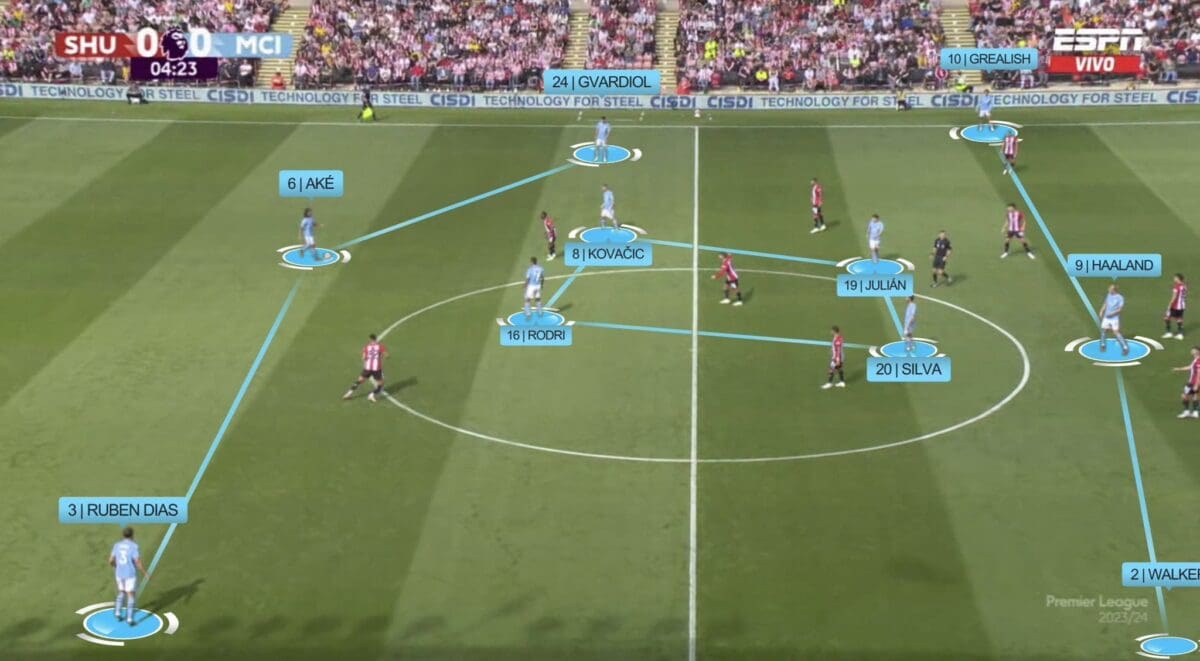
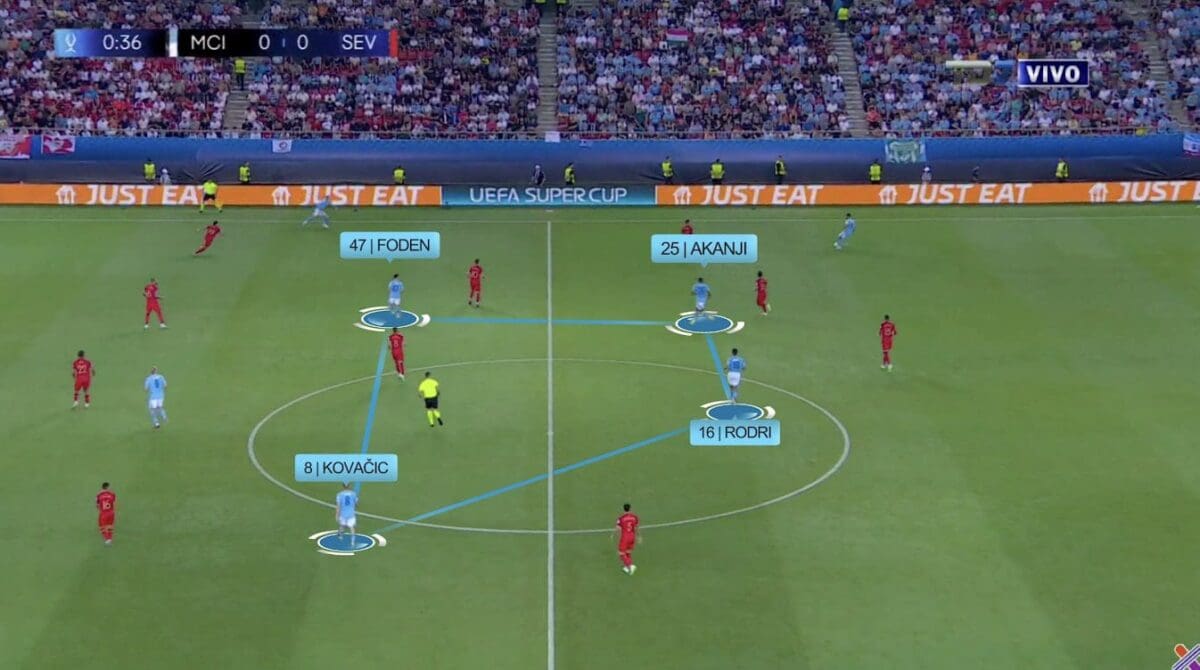
In the 2022/23 season, Guardiola made some significant tactical modifications to further enhance his team’s playing style. One major change involved the incorporation of Erling Haaland, Manchester City’s major summer signing and new number nine. Haaland’s exceptional goal-scoring ability added a new dimension to the team’s attacking play, allowing for more direct balls into the front line. This forced opponents to think twice about applying a high press, as Haaland’s physical presence and ability to protect and retain longer passes made him a formidable threat.
Incorporating Haaland into the System
Guardiola’s tactical adjustments to accommodate Haaland included a new build-up structure and exploiting the Norwegian striker’s potential. Traditionally, Manchester City’s build-up in the first third of the pitch featured the two center-backs starting wide, with the goalkeeper playing a central role. However, with the addition of Haaland, the first line of attack in front of the goalkeeper now consisted of three players: one center-back and two players beside him, who could be either center-backs or full-backs. This change created more space for players to receive or drive into, outside the central channel.

In the final third, Manchester City often utilized a 3-2 structure, with one of the attacking midfielders advancing in support of Haaland. This left an attacking line of three, including the other attacking midfielder and two wide attackers. Opponents were faced with the decision of whether to mark zonally or go man-for-man. If they marked zonally, Manchester City exploited the space behind the defense with precision and aggression. If opponents opted for man-marking, there were gaps between the lines for City’s intelligent attacking midfielders to exploit.
Since his debut for Borussia Dortmund, Erling Haaland has scored 100 league goals.
Across the top five European leagues, only Robert Lewandowski (114) has scored more since then (18 January 2020).#BURMCI pic.twitter.com/xYDQj40eQJ
— Opta Analyst (@OptaAnalyst) August 11, 2023
Haaland’s impact was not limited to the attacking phase of play; he also played a crucial role in Man City’s intense full-pitch press. His ability to sustain a high tempo from the front line throughout games, combined with his tactical intelligence in directing his pressing, made him a key component of Guardiola’s defensive strategy. With Haaland leading the press, Manchester City effectively regained possession and countered with devastating speed and precision.
Possession and Progression
Guardiola’s teams have always prioritized possession as a means of controlling games. However, relying solely on short build-up play had its limitations, as highly organized opposition presses could reduce both space and time on the ball. With the addition of Haaland, Guardiola had the option of a more direct approach, utilizing the striker’s ability to receive long balls with his back to goal. This not only created opportunities for Haaland to score but also allowed his teammates to get forward and exploit the space created by the opposition’s defensive adjustments.
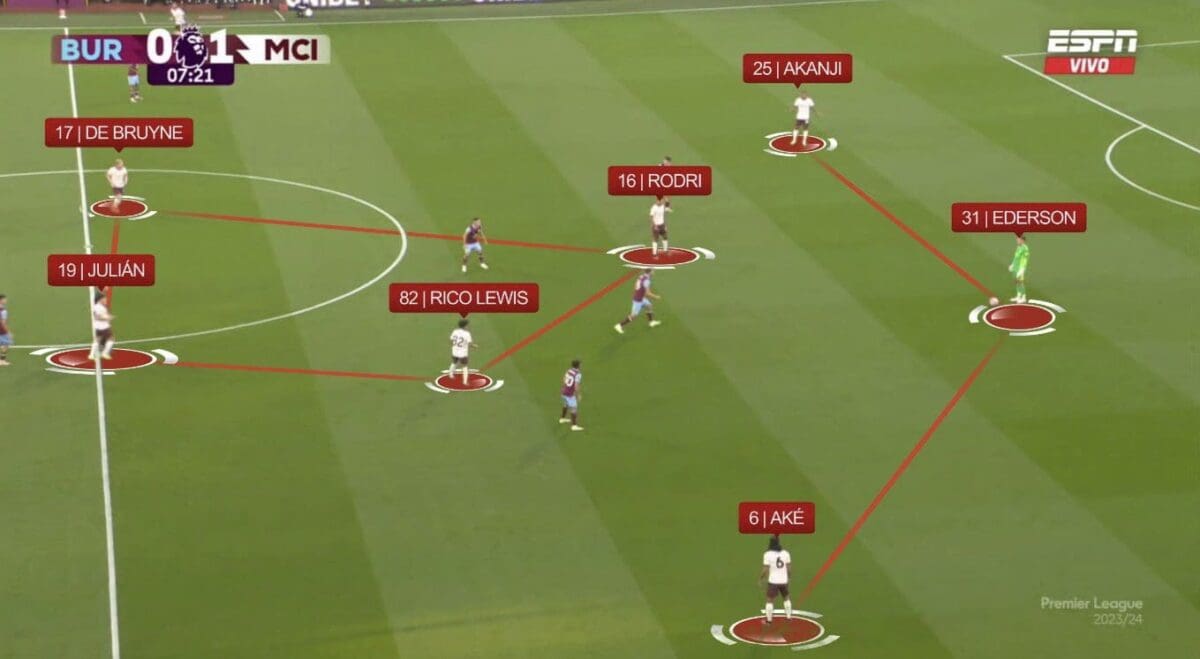

While possession remained at the heart of Manchester City’s game, the team’s ability to adapt to different situations increased. The quality of players like Ederson in goal, the midfielders’ positional intelligence, and the support of players further forward enabled Manchester City to adapt to various pressing strategies and maintain control of the game. Possession became a means of progression, with City’s players finding the right balance between short, intricate passing and more direct, penetrating passes.
The Influence of Set-Pieces
Manchester City’s set-piece variety has been a long-standing strength of the team, with players like Kevin De Bruyne, Ilkay Gundogan, and Riyad Mahrez excelling in dead-ball situations. However, the addition of Haaland added another dimension to City’s set-piece game. Erling Haaland’s aerial ability and physicality provided an additional threat in attacking the first ball, as well as capitalizing on second balls and rebounds. Combined with the height and physicality of players like Ruben Dias, John Stones, and Aymeric Laporte, Manchester City became a formidable force in both boxes.
GUNDOGAN SCORES HIS SECOND OF THE GAME TO GIVE CITY A 2-1 LEAD pic.twitter.com/CVdDQeU5u6
— ESPN FC (@ESPNFC) June 3, 2023
Opponents became so concerned with City’s direct threat from set-pieces that it opened up opportunities for more nuanced deliveries. The FA Cup final victory over Manchester United showcased this, as Man United packed the box to deal with City’s physical presence, allowing De Bruyne to find a completely unmarked Gundogan on the edge of the area. This goal proved to be the match-winner and demonstrated City’s ability to exploit set-piece situations.
Guardiola’s Tactical Innovation
One of Guardiola’s greatest strengths is his vision and ability to design complex strategies based on the qualities of his players. At Barcelona, he utilized the passing ability of players like Xavi Hernandez, Andres Iniesta, and Sergio Busquets, combined with the movement and positioning of Lionel Messi, to create one of the finest club teams in history. At Bayern Munich, Guardiola introduced the concept of false full-backs to create overloads in central positions and used wide forwards to attack defenders one-on-one.
Individual Positioning
John Stones, a versatile and tactical genius, excelled at baiting and escaping pressure, finding passing angles, using blinded movements to exploit space, and manipulate his body to create room.
The brains of Pep Guardiola pic.twitter.com/oOTHur7xWr
— Gaurav (@GauravAnlyst) June 9, 2023
These tactical innovations have continued at Manchester City. Guardiola has employed false full-backs like Fabian Delph and Oleksandr Zinchenko, who can drift from their positions to create a double pivot in front of the back three. Recently we can notice John Stones or Manuel Akanji stepping into the midfield alongside Rodri from the centre-back position. This formation often results in a 3-2-2-3 or W-M shape, with the central midfield box outnumbering the opposition’s midfield three. The flexibility to switch between a back three or four, the use of a false nine, and the rotation of attacking midfielders have provided Manchester City with a versatile and unpredictable attacking threat.
Defending and Pressing
Guardiola’s teams are known for their immediate and aggressive counter-pressing when possession is lost. This counter-pressing strategy aims to surround opponents quickly and intercept passes, preventing them from launching effective counter-attacks. It is a key element of Guardiola’s defensive approach and allows City to regain possession high up the pitch.

Defensively, Guardiola prefers a 4-1-4-1 defensive block that can transition into a 4-4-2 when defending for extended periods. This defensive shape provides stability and allows Man City to maintain a compact structure. The counter-press is adapted based on the opponent’s pressing strategy, with wide forwards advancing and moving infield to press opposing central defenders. The leading attacker screens the defensive midfielder, discouraging central build-up play. Manchester City’s defensive strength has been further enhanced by the arrival of players like John Stones and Ruben Dias, who have solidified the backline and reduced vulnerabilities.
Defensive Principles: Individual and Group
One of Pep’s fundamental defensive principles revolves around adjusting the distance of full-backs. This becomes crucial when dealing with accelerating wingers, as full-backs find themselves at a notable disadvantage in such scenarios. To address this challenge, Pep emphasizes the necessity for his team’s full-backs to close the gap with opposition wingers when they receive the ball at their feet. By doing so, the objective is to impede the opposition’s attacking pace, setting the stage for a subsequent concerted effort to outnumber and regain possession from the wingers.


Moving on to another crucial facet of this principle, it’s noteworthy that even with a minimized distance, the full-back and winger remain on the same horizontal line. This alignment allows the winger to continue progressing the ball forward and even exploit the space behind the full-back. When the distance is reduced, interpreting the winger’s movements becomes intricate. To counteract this vulnerability, Pep instructs his full-backs to execute vertical runs, effectively obstructing the path behind them that the opposition winger might exploit. This strategic movement, in turn, creates a channel known as the half-space. To prevent the opposition’s vertical advancement, the responsibility then falls on the center-back, necessitating swift sliding movements to close off these pathways.


The overarching aim of this principle remains constant: forcing the opposition into retreat. Consequently, the full-back must maintain a backward-leaning posture, ready to promptly cover the space behind them. Importantly, this principle also extends to Manchester City’s wingers, underscoring the meticulous nuances that exemplify Guardiola’s tactical brilliance.
Conclusion
Pep Guardiola’s revolution at Manchester City has transformed the team into a dominant force in English football. His tactical innovations, adaptation to player strengths, and emphasis on attacking football have propelled City to unprecedented success. The incorporation of Erling Haaland added a new dimension to the team’s play, with the striker’s goal-scoring ability and physical presence proving to be instrumental in City’s treble-winning campaign. Guardiola’s ability to create numerical overloads, exploit set-pieces, and adapt his team’s structure has made Manchester City a formidable opponent for any team. As Guardiola continues to evolve his tactics, the future looks bright for Man City under his guidance.


